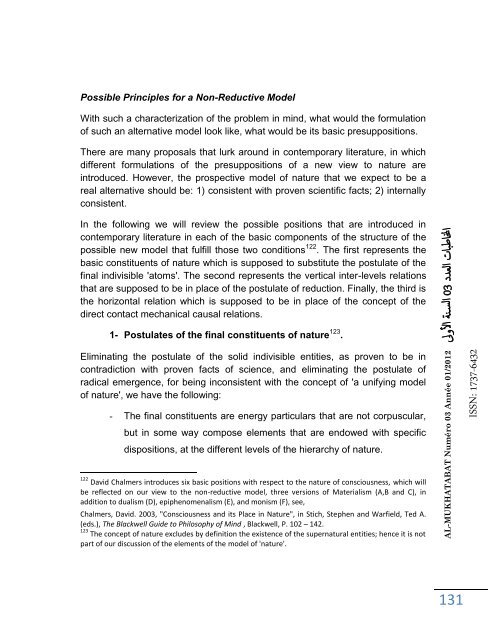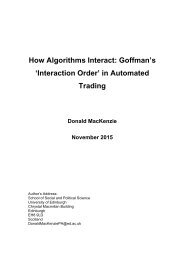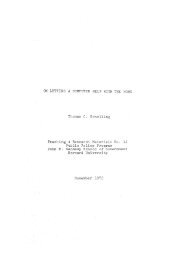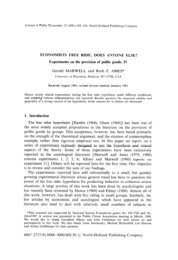n3-al-mukhatabat-journal
n3-al-mukhatabat-journal
n3-al-mukhatabat-journal
You also want an ePaper? Increase the reach of your titles
YUMPU automatically turns print PDFs into web optimized ePapers that Google loves.
Possible Principles for a Non-Reductive Model<br />
With such a characterization of the problem in mind, what would the formulation<br />
of such an <strong>al</strong>ternative model look like, what would be its basic presuppositions.<br />
There are many propos<strong>al</strong>s that lurk around in contemporary literature, in which<br />
different formulations of the presuppositions of a new view to nature are<br />
introduced. However, the prospective model of nature that we expect to be a<br />
re<strong>al</strong> <strong>al</strong>ternative should be: 1) consistent with proven scientific facts; 2) intern<strong>al</strong>ly<br />
consistent.<br />
In the following we will review the possible positions that are introduced in<br />
contemporary literature in each of the basic components of the structure of the<br />
possible new model that fulfill those two conditions 122 . The first represents the<br />
basic constituents of nature which is supposed to substitute the postulate of the<br />
fin<strong>al</strong> indivisible 'atoms'. The second represents the vertic<strong>al</strong> inter-levels relations<br />
that are supposed to be in place of the postulate of reduction. Fin<strong>al</strong>ly, the third is<br />
the horizont<strong>al</strong> relation which is supposed to be in place of the concept of the<br />
direct contact mechanic<strong>al</strong> caus<strong>al</strong> relations.<br />
1- Postulates of the fin<strong>al</strong> constituents of nature 123 .<br />
Eliminating the postulate of the solid indivisible entities, as proven to be in<br />
contradiction with proven facts of science, and eliminating the postulate of<br />
radic<strong>al</strong> emergence, for being inconsistent with the concept of 'a unifying model<br />
of nature', we have the following:<br />
- The fin<strong>al</strong> constituents are energy particulars that are not corpuscular,<br />
but in some way compose elements that are endowed with specific<br />
dispositions, at the different levels of the hierarchy of nature.<br />
122 David Ch<strong>al</strong>mers introduces six basic positions with respect to the nature of consciousness, which will<br />
be reflected on our view to the non-reductive model, three versions of Materi<strong>al</strong>ism (A,B and C), in<br />
addition to du<strong>al</strong>ism (D), epiphenomen<strong>al</strong>ism (E), and monism (F), see,<br />
Ch<strong>al</strong>mers, David. 2003, "Consciousness and its Place in Nature", in Stich, Stephen and Warfield, Ted A.<br />
(eds.), The Blackwell Guide to Philosophy of Mind , Blackwell, P. 102 – 142.<br />
123 The concept of nature excludes by definition the existence of the supernatur<strong>al</strong> entities; hence it is not<br />
part of our discussion of the elements of the model of 'nature'.<br />
AL-MUKHATABAT Numéro 03 Année 01/2012 لىولأا ةن سلا 30 ددعلا تابطانا<br />
131<br />
ISSN: 1737-6432







